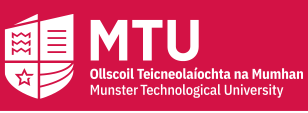Date of Award
2023
Document Type
Doctoral Thesis
Degree Name
Doctor of Philosophy
Department
Civil, Structural, & Environmental Engineering
First Advisor
Dr Niamh Power
Second Advisor
Dr Joe Harrington
Third Advisor
Ms Denise Barnett
Abstract
Phosphorus (P) is an essential life-supporting nutrient for which there is no substitute. P naturally cycles within nature. Modern farming practice and food production have altered the natural P cycle. Successive crop harvests remove P from the soil as crops and transport them to urban areas to feed the population. To replace P removed from the soil through these crop harvests, mineral P fertilisers are applied to the soil to sustain crop production. Mineral P fertilisers are derived from finite phosphate rock. The European Union does not have an indigenous supply of phosphorus rock, which poses a significant issue for food security. In parallel with P rock scarcity, large quantities of P are lost through effluent discharges to receiving water bodies from municipal wastewater treatment plants (WWTP). Once discharged, the P is effectively lost from the P-cycle and cannot be easily recovered, it poses a significant risk to the aquatic environment. To close the Irish municipal wastewater P cycle, research work has been undertaken in this thesis across three main research pillars of review, recovery and reuse.
Review: An in-depth review of the Irish P balance was conducted to investigate the agricultural soil P requirements and the indigenous sources of P fertilisers. The research highlighted that up to 95,000 tonnes (t) of P are required to increase soil P levels to agronomically optimal levels with 1,475 t of P lost annually from Irish WWTPs through effluent discharge to receiving waters.
Recovery: A proprietary Veolia Struvia™ pilot plant was sited, commissioned and optimised on the Macroom WWTP, the treatment plant is classed as a typical Irish WWTP in both size and treatment process. The pilot plant treated up 600,000 L of WWTP effluent recovering calcium phosphate from the WWTP effluent, with a P recovery rate of up to 62%.
Reuse: The fertilisation effect of the recovered calcium phosphate product was analysed using a series of short-duration pot trials, in a bid to create a uniform and repeatable platform to test the recovered fertilisers. This research produced a P deficient artificial growing medium from readily available mineral constituent products. Over a 17-week growth trial period the recovered P fertiliser from the Macroom WWTP produced a statistically comparable grass dry natter (DM) yield to commercial P fertiliser (TSP). All fertiliser test cases produced a statistically greater DM yield then the control. The recovered P product was further tested in a series of long-duration field trials, to review the fertilisation capabilities of the recovered P product compared to commercial fertiliser, in typical Irish fertiliser end-use conditions.
This research has successfully closed the Irish municipal wastewater P-cycle in a ‘hands-on’ practical manner, producing a P recovery solution for the typical Irish WWTP, while providing a valuable fertiliser product for Irish agriculture. This was conducted through the implementation of the three research pillars creating a practical, comprehensive and holistic approach, to closing the Irish municipal wastewater P-cycle. This was effectively completed with the application of the recovered P fertiliser on the field trials and by returning the recovered P to the soil as a P-rich fertiliser that otherwise would have been lost to the aquatic environment.
Recommended Citation
O’Donnell, Ciaran, "Closing the modern Irish municipal wastewater phosphorus cycle" (2023). Theses [online].
Available at: https://sword.mtu.ie/allthe/829
Creative Commons License

This work is licensed under a Creative Commons Attribution 4.0 International License.
Access Level
info:eu-repo/semantics/openAccess
Project Identifier
info:eu-repo/grantAgreement/ERDF/Interreg V-B - North-West Europe/NWE292/IE/PHOSphorus Recovery from waste water FOR YOUr Life/Phos4You
Included in
Bioresource and Agricultural Engineering Commons, Civil and Environmental Engineering Commons



Comments
Further Supervisor: Dr Joe Connell